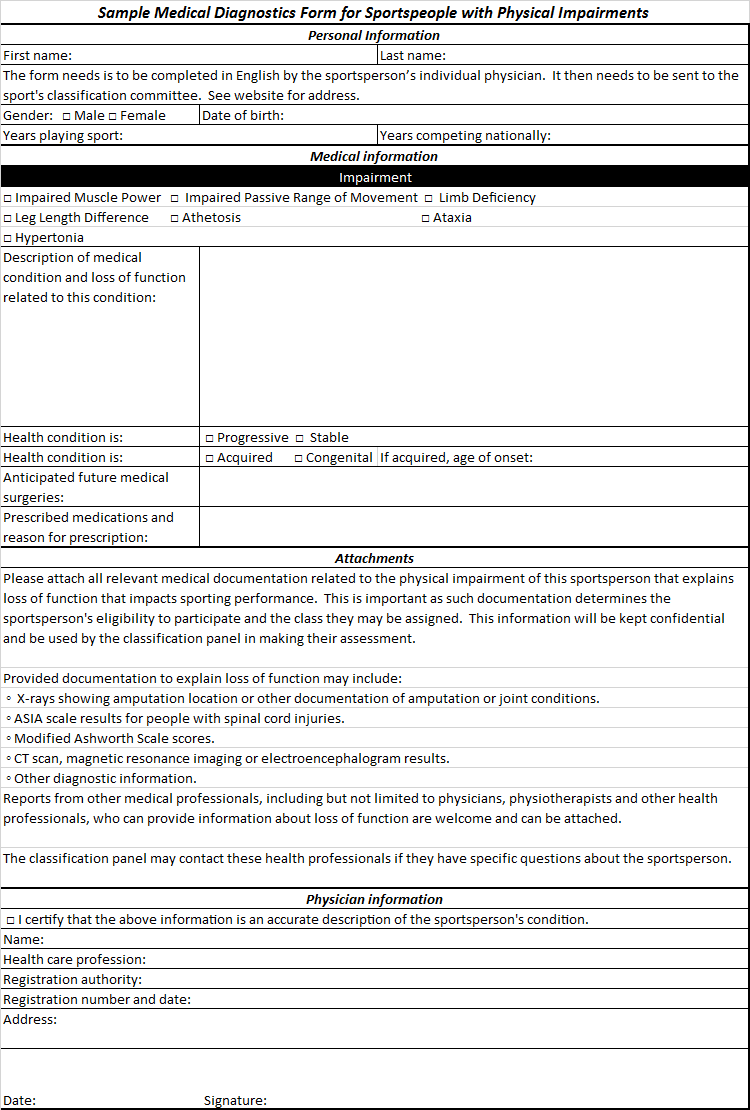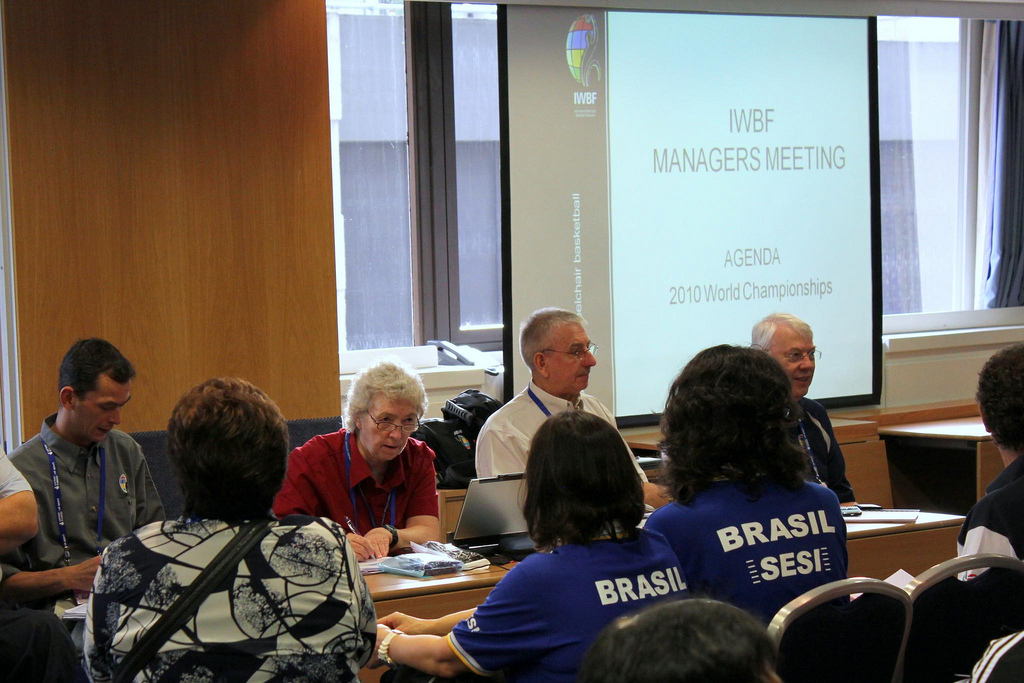|
CP8 (classification)
CP8 is a disability sport classification specific to cerebral palsy. In many sports, it is grouped inside other classifications to allow people with cerebral palsy to compete against people with other different disabilities but the same level of functionality. CP8 classified competitors are the group who are least physically affected by their cerebral palsy, with their disability generally manifested as spasticity in at least one limb. There are a number of sports for which they are eligible to participate in, including alpine skiing, athletics, cycling, football, Nordic skiing, standing volleyball and swimming. In some of these sports, different classification systems or names for CP8 are used. Definition and participation CP8 classified competitors are the group who are least physically affected by their cerebral palsy. CP8 class sports people tend to participate in football, cycling, swimming and athletics. Cerebral Palsy-International Sports and Recreation Association def ... [...More Info...] [...Related Items...] OR: [Wikipedia] [Google] [Baidu] |
Disability Sport Classification
Disability sports classification is a system that allows for fair competition between people with different types of disabilities. Historically, the process has been overseen by 2 groups: specific disability type sport organizations that cover multiple sports, and specific sport organizations that cover multiple disability types including amputations, cerebral palsy, deafness, intellectual impairments, les autres and short stature, vision impairments, spinal cord injuries, and other disabilities not covered by these groups. Within specific disability types, some of the major organizations have been: CPISRA for cerebral palsy and head injuries, ISMWSF for spinal cord injuries, ISOD for orthopaedic conditions and amputees, INAS for people with intellectual disabilities, and IBSA for blind and vision impaired athletes. Amputee sports classification is a disability specific sport classification used for disability sports to facilitate fair competition among people with different types ... [...More Info...] [...Related Items...] OR: [Wikipedia] [Google] [Baidu] |
LW6/8
LW6/8 is a para-alpine and para-Nordic standing skiing ''sport class'', a classification defined by the International Paralympic Committee (IPC) for people with an upper extremity issue who have paralysis, motor paresis affecting one arm, a single upper arm amputation or CP8 classified cerebral palsy. LW6/8 skiers use two skis and one pole in both para-alpine and para-Nordic skiing. Skiers in this class include 2006 New Zealand Winter Paralympian Anthony Field, Germany's Thomas Oelsner and Australia's Mitchell Gourley. Definition This classification is used in para-alpine and para-Nordic standing skiing, where LW stands for Locomotor Winter. Designed for people with an upper extremity issue, a skier may be classified as LW6/8 if they have paralysis, motor paresis affecting one arm, or a single upper arm amputation. The International Paralympic Committee (IPC) defined this classification for para-alpine as "Competitors with disabilities in one upper limb, skiing with two norm ... [...More Info...] [...Related Items...] OR: [Wikipedia] [Google] [Baidu] |
Para-equestrian
Para-equestrian is an equestrian sport governed by the International Federation for Equestrian Sports (FEI), and includes two competitive events: One is para-equestrian dressage, which is conducted under the same basic rules as conventional dressage, but with riders divided into different competition grades based on their functional abilities. The other is para-equestrian driving, which operates under the same basic rules as combined driving but places competitors in various grades based on their functional abilities. History The first official Paralympic Games was held in Rome in 1960. The Games were initially open only to athletes in wheelchairs; at the 1976 Summer Games, athletes with different disabilities were included for the first time at a Summer Paralympics. Competitors with cerebral palsy classifications were allowed to compete at the Paralympic games for the first time at the 1984 Summer Paralympics. At the 1992 Summer Paralympics, all disability types were eli ... [...More Info...] [...Related Items...] OR: [Wikipedia] [Google] [Baidu] |
International Wheelchair Basketball Federation
The International Wheelchair Basketball Federation (IWBF) is the international governing body for the sport of wheelchair basketball. IWBF is recognized by the International Paralympic Committee (IPC) as the sole competent authority in wheelchair basketball worldwide. International Basketball Federation (or FIBA) has recognized IWBF under Article 53 of its General Statutes. History In 1973, the International Stoke Mandeville Games Federation (ISMGF) established the first Sub-section for wheelchair basketball. At that time ISMGF was the world governing body for all wheelchair sports. In 1989, ISMGF accepted the name International Wheelchair Basketball Federation (IWBF) for its former sub-section. With this step wheelchair basketball began its journey for full independence and in 1993 IWBF was established as the world body for wheelchair basketball with full responsibility for development of the sport. Over the next five years IWBF membership grew in size and the federation confi ... [...More Info...] [...Related Items...] OR: [Wikipedia] [Google] [Baidu] |
International Wheelchair And Amputee Sports Federation
The International Wheelchair and Amputee Sports Federation (IWAS) is an international sports organisation that governs sports for athletes with physical impairments. IWAS is a registered charity with its headquarters located at Aylesbury College in Buckinghamshire. It is the international governing body for the Paralympic sport of wheelchair fencing as well as the developing sport of Power hockey. IWAS has over 60 member nations and it provides support for sporting opportunities across the world. IWAS acts as a multi-sport competition organiser for the IWAS World Games and IWAS Under 23 World Games. History The International Stoke Mandeville Games were the forerunner of the Paralympic Games and followed the vision of their creator and founder, Sir Ludwig Guttmann. IWAS was formed in 2005 following a merger of the International Stoke Mandeville Wheelchair Sports Federation (ISMWSF) (which was formerly known as the International Stoke Mandeville Games Federation (ISMGF)) ... [...More Info...] [...Related Items...] OR: [Wikipedia] [Google] [Baidu] |
World Archery Federation
The World Archery Federation (WA, also and formerly known as FITA from the French ''Fédération Internationale de Tir à l'Arc'') is the governing body of the sport of archery. It is based in Lausanne, Switzerland. It is composed of 156 national federations and other archery associations, and is recognised by the International Olympic Committee. History FITA was founded on 4 September 1931 in Lwow, Poland (today Lviv, Ukraine). Its seven founding member states were France, Czechoslovakia, Sweden, Poland, the United States, Hungary, and Italy. The aim of the organization was to create regular archery championships, and to return archery to the Olympic Games (the sport had not been featured since 1920). FITA was finally successful in returning archery to the Olympic program in the 1972 Summer Olympics. To celebrate the organization's 80th anniversary in July 2011, a large majority of the FITA Congress voted to change the name from FITA to the World Archery Federation or WA. In M ... [...More Info...] [...Related Items...] OR: [Wikipedia] [Google] [Baidu] |
S10 (classification)
S10, SB9, SM10 are Paralympic sports#Classification, disability swimming classifications used for categorizing swimmers based on their level of disability. Swimmers in this class tend to have minimal weakness affecting their legs, missing feet, a missing leg below the knee or problems with their hips. This class includes a number of different disabilities including people with amputations and cerebral palsy. The classification is governed by the International Paralympic Committee, and competes at the Paralympic Games. Definition This classification is for swimming (sport), swimming. In the classification title, S represents Freestyle, Backstroke and Butterfly strokes. SB means breaststroke. SM means individual medley. Swimming classifications are on a gradient, with one being the most severely physically impaired to ten having the least amount of physical disability. Jane Buckley, writing for the Sporting Wheelies, describes the swimmers in this classification as having: "very ... [...More Info...] [...Related Items...] OR: [Wikipedia] [Google] [Baidu] |
S9 (classification)
S9, SB8, SM9 are disability swimming classifications used for categorizing swimmers based on their level of disability. Swimmers in this class generally have severe weakness in one leg. This class includes a number of different disabilities including people with amputations and cerebral palsy. The classification is governed by the International Paralympic Committee, and competes at the Paralympic Games. Definition This classification is for swimming. In the classification title, S represents Freestyle, Backstroke and Butterfly strokes. SB means breaststroke. SM means individual medley. Jane Buckley, writing for the Sporting Wheelies, describes the swimmers in this classification as having: "severe weakness in one leg only; Swimmers with very slight coordination problems; Swimmers with one limb loss. Unless there is an underlying medical condition usually all of these athletes will start out of the water." Swimming classifications are on a gradient, with one being the most seve ... [...More Info...] [...Related Items...] OR: [Wikipedia] [Google] [Baidu] |
S8 (classification)
S8, SB7, SM8 are Paralympic sports#Classification, disability swimming classifications used for categorizing swimmers based on their level of disability. This class includes a number of different disabilities including people with amputations and cerebral palsy. The classification is governed by the International Paralympic Committee, and competes at the Paralympic Games. Definition This classification is for Swimming (sport), swimming. In the classification title, S represents Freestyle, Backstroke and Butterfly strokes. SB means breaststroke. SM means individual medley. The number following indicates degree of disability, with one being the most severely physically impaired to ten having the least amount of physical disability. According to the International Paralympic Committee, examples of those eligible for the S8, SB8 and SM8 classes include "Swimmers who have lost either both hands or one arm [...] also, athletes with severe restrictions in the joints of the lower limbs." ... [...More Info...] [...Related Items...] OR: [Wikipedia] [Google] [Baidu] |
Cerebral Palsy
Cerebral palsy (CP) is a group of movement disorders that appear in early childhood. Signs and symptoms vary among people and over time, but include poor coordination, stiff muscles, weak muscles, and tremors. There may be problems with sensation, vision, hearing, and speaking. Often, babies with cerebral palsy do not roll over, sit, crawl or walk as early as other children of their age. Other symptoms include seizures and problems with thinking or reasoning, which each occur in about one-third of people with CP. While symptoms may get more noticeable over the first few years of life, underlying problems do not worsen over time. Cerebral palsy is caused by abnormal development or damage to the parts of the brain that control movement, balance, and posture. Most often, the problems occur during pregnancy, but they may also occur during childbirth or shortly after birth. Often, the cause is unknown. Risk factors include preterm birth, being a twin, certain infections during pr ... [...More Info...] [...Related Items...] OR: [Wikipedia] [Google] [Baidu] |
LW4 (classification)
LW4 is a para-alpine and para-Nordic standing skiing ''sport class'' defined by the International Paralympic Committee (IPC) for skiers who may have a disability in one lower extremity, which may be a result of a leg amputation below the knee, knee arthrodesis or a hip arthrodesis. For international skiing competitions, classification is done through IPC Alpine Skiing or IPC Nordic Skiing. A national federation such as Alpine Canada handles classification for domestic competitions. Skiers in this classification compete with one or two skis and two ski poles, except in para-Nordic skiing where the skier must use two skis and two ski poles. Skiers in this sport class may have a specially made ski boot with a prosthetic built into it. Cerebral palsy skiers in this class may have better balance while using skis than they would otherwise. This presents challenges for coaches who are working with the skier. Compared to other skiers in the class, the skier with cerebral palsy may tire m ... [...More Info...] [...Related Items...] OR: [Wikipedia] [Google] [Baidu] |






